Dounreay Updates Information On Radio Active Particles Released To The Environment
11th June 2023
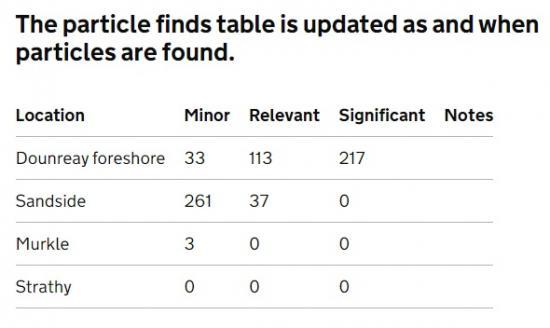
An important part of the work to close down Dounreay is to address the legacy of radioactive particles in the marine environment around the site.
Particles are fragments of irradiated nuclear fuel discharged to sea as a result of historic practices in reprocessing.
Used fuel from the reactors on site and other research reactors in Britain and abroad was recycled in the site's reprocessing facilities.
The swarf produced during the procedure was discharged from fuel ponds with the water and were released to sea.
It is not known how many particles were released but extensive research suggests that the bulk were released between 1958 and 1984.
The most hazardous fragments are located close to an old discharge point on the seabed.
Their disintegration is believed to be the source of smaller, less hazardous particles detected on local beaches since the early 1980s.
Health risks
Expert laboratory research into the potential health effects of different particles has been carried out by the Health Protection Agency for Scottish Environment Protection Agency (SEPA), and studied by the independent Dounreay Particles Advisory Group (DPAG). The work looked at the likely health effects of different particles being swallowed, inhaled or coming into skin contact.
DPAG concluded that only those particles in the significant category pose a realistic potential to cause harm to members of the public, and that the probability of the most frequent beach-users at Sandside coming into contact with a relevant particle is one in 80 million.
A number of studies on the potential effects of particles have been completed by independent bodies. Explanations of the hazards and risks can be found at:
SEPA
Committee on Medical Aspects of Radiation in the Environment (COMARE)
Food Standards Agency (FSA)
Monitoring
Beach monitoring continues and forms part of the Environmental Authorisation (Scotland) Regulations 2018 (EASR18) authorisation granted to the site by SEPA. Monitoring of land owned by third parties is subject to agreements on access.
During 2003-2008 an extensive consultation programme was established to identify the best practicable environmental option (BPEO). The consultation led to recommendations to Government bodies on the way forward which is environmentally and publicly acceptable.
This process recognised that recovery of every particle was impractical but that it was feasible to seek recovery of larger, more hazardous particles that pose a significant health risk and which had settled in the sediment close to Dounreay. That, along with on-shore monitoring specifically at Dounreay foreshore and Sandside beach, was identified as the preferred way forward.
Underwater clean-up started in August 2008, targeted at a 60-hectare area of seabed known as the "plume" where the most hazardous particles were located. This work continued each summer until 2012.
This programme was guided by the independent expert Particles Recovery Advisory Group (Dounreay), PRAG(D), which advises both DSRL and SEPA.
All particles recovered from the seabed were returned to Dounreay.
The Dounreay foreshore and Sandside beach in the bay adjacent to the site are monitored on a regular basis. Strathy beach and Murkle beach act as ‘gatekeepers' and are monitored twice a year to ensure that the offshore work has not adversely impacted the surrounding beaches.
When a particle is detected, it is retrieved and taken to Dounreay for analysis. The regulator is informed, and the find is reported publicly via this website. Any unusual finds are treated in the same manner.
In the 1990s extensive additional surveys of the site were carried out. This included roadside verges, cliff top land and drainage systems. By 2009, these surveys had yielded 89 particles.
Detailed investigations identified a number of areas of the site where more particles could be expected to be found during decommissioning.
The effectiveness of the clean-up is reported by Dounreay to SEPA, PRAG(D) and other interested parties, including the site stakeholder group.
Particle finds by area can be found HERE
Early Dounreay Photos
Older Dounreay News Items
Related Businesses
Related Articles
TAE Technologies and UKAEA partner to commercialise fusion tech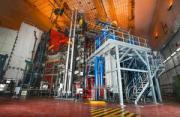
Joint venture to develop neutral beams for fusion and non-fusion applications, creating high-skilled jobs and establishing a critical supply chain. TAE Technologies, a leading US private fusion energy firm with over 25 years at the forefront of scientific innovation, today announces a bilateral and reciprocal investment commitment with the United Kingdom's national fusion laboratory, the UK Atomic Energy Authority (UKAEA) to commercialise TAE's proprietary particle accelerator technology for the global market.
Buried Hazards, Unfinished Business - What the NDA's 2025 Progress Report Really Tells Us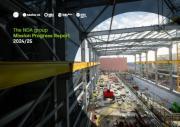
The Nuclear Decommissioning Authority (NDA) has released its 2025 Mission Progress Report is a slightly sprawling document chronicling one of the UK's most complex environmental undertakings. The safe dismantling of its early nuclear legacy.
New recruit officers join the Civil Nuclear Constabulary
The Civil Nuclear Constabulary (CNC) welcomes its newest recruits. The CNC hosted two passing out parades for the graduating Authorised Firearms Officers (AFOs) of Initial Foundation Programme (IFP) 106.
Dounreay's next generation of talent honoured by apprentice award
Nuclear Restoration Services Dounreay's Kate Thomson has won Modern Apprentice of the Year at the Highlands & Islands Apprenticeship Awards in Inverness. Kate, who is in the second year of her apprenticeship in commercial and quantity surveying, said she was thrilled by the honour.
Taskforce calls for radical reset of nuclear regulation in UK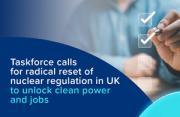
Nuclear Regulatory Taskforce publishes final report and calls for radical reset of overly complex nuclear regulatory system. An overly complex nuclear regulatory system has contributed to the "relative decline" of the UK's ability to deliver faster and cheaper nuclear projects.
Funding approved for Wick Harbour port consultant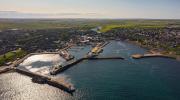
A specialist ports consultant has been appointed to develop a long-term strategic plan for Wick Harbour Authority (WHA) in Caithness. WHA has secured £47,775 from Highlands and Islands Enterprise (HIE) and the Nuclear Restoration Services, NRS Dounreay towards the cost of the services.
Fallon Campbell From Melvich Near Thurso Named As Apprentice of the Year At Awards In London
Rising star from North Scotland honoured at event to celebrate brightest and best in industry. An electrical apprentice from North Scotland is celebrating after being recognised for her contribution to industry at the 13th annual Engineering Construction Industry ECI Training and Development Awards in London.
The NDA Group Graduate Programme: more than a job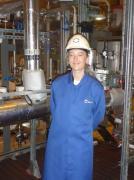
The NDA group graduate scheme offers far more than just a stepping stone into the nuclear industry; it's a chance to grow professionally, explore new places, and become part of a supportive community. Nuala Ledward, Assurance and Performance Graduate, shares how her secondment to Dounreay brought these benefits to life.
UKAEA develops 3D printing for fusion components
At its recently opened Central Support Facility (CSF), UKAEA has commissioned an electron beam additive manufacturing machine that can be used to incorporate tungsten into components, alongside a selective laser manufacturing machine. Fusion can play a key role in a global low carbon energy future.Advancing Fusion Remote Maintenance: Industry Collaboration Driving Innovation
As part of the Fusion Futures (FF) programme, UKAEA's Remote Applications in Challenging Environments (RACE) has partnered with industry leaders to develop two groundbreaking technologies for remote maintenance in fusion energy engineering. Thanks to FF funding, industry has taken the lead in maturing UKAEA technology concepts—delivering real-world solutions that enhance operational autonomy and reduce maintenance burdens in extreme environments.
